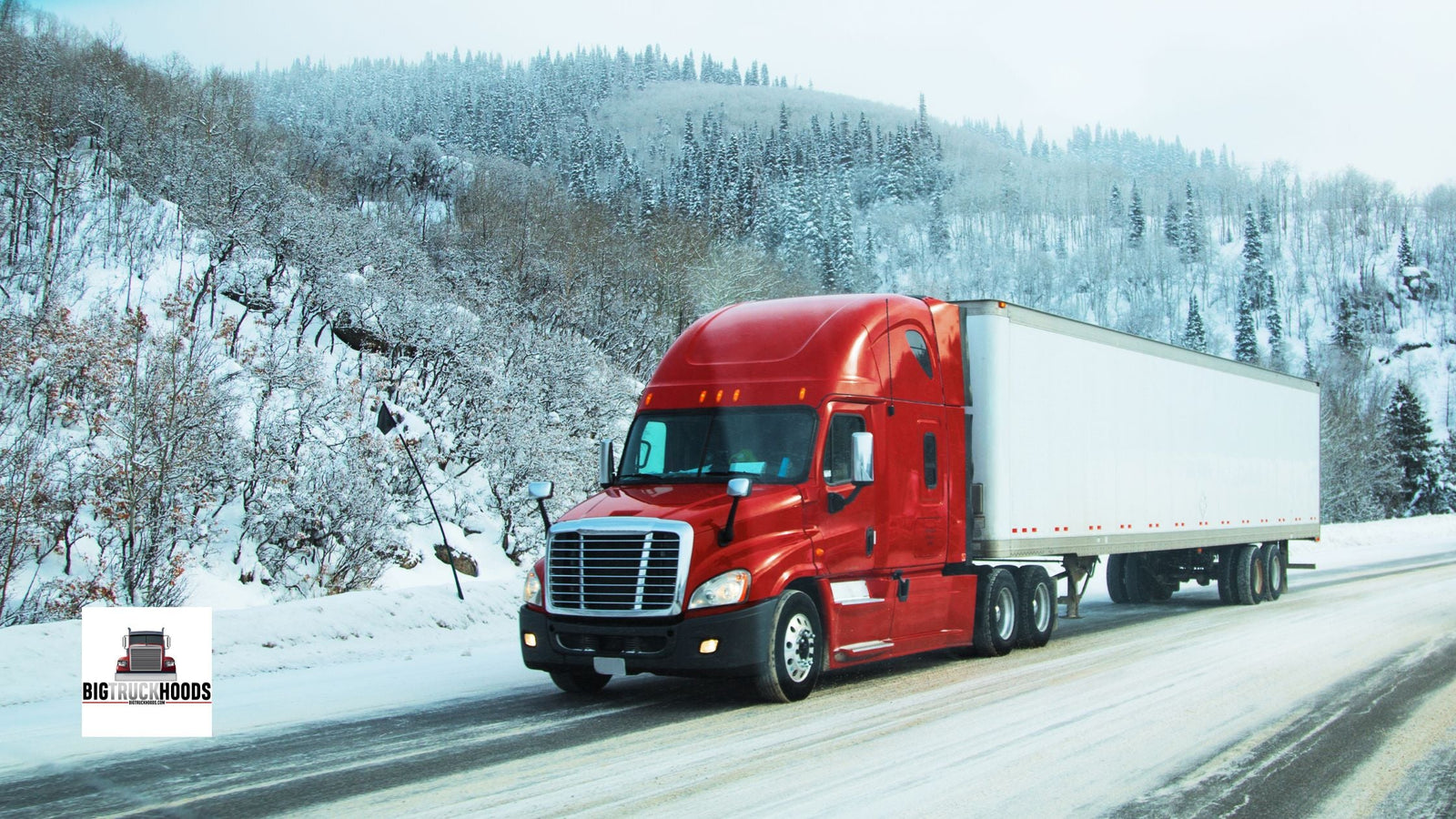Winter driving poses unique challenges for truck drivers, especially those operating large semi-trucks. Snow, ice, and freezing temperatures make the roads more dangerous, requiring extra caution and preparation. By following these winter driving tips, you can stay safe, protect your vehicle, and ensure smooth journeys, even in the harshest winter conditions.
1. Prepare Your Semi-Truck for Winter Conditions
Proper preparation is key to safely handling winter truck driving conditions. Before heading out, make sure your semi-truck is winter-ready.
Winter Preparation Checklist:
- Check Your Tires: Ensure your tires are in good condition and have the right tread depth for icy roads. If you frequently drive in extreme weather, consider switching to winter-specific tires.
- Inspect Your Battery: Cold temperatures can affect battery performance. Test your battery’s charge and replace it if it’s nearing the end of its life.
- Ensure Visibility: Clear your windshield, mirrors, and lights of snow and ice before setting off. Functioning wiper blades and plenty of windshield washer fluid are essential for maintaining visibility.
- Carry Winter Essentials: Have a snow brush, ice scraper, and snow chains on board. Snow chains provide extra traction, critical for large trucks navigating snowy roads.
2. Adjust Your Driving Techniques for Winter Weather
Once you’re on the road, it's important to adjust your driving techniques to accommodate winter conditions. Semi-trucks require longer stopping distances, and slippery roads can lead to dangerous situations if you're not cautious.
Winter Truck Driving Tips:
- Slow Down: Reduced speeds give you more control and reaction time. Always drive below the speed limit when roads are slick with ice or snow.
- Increase Following Distance: A safe following distance is about six seconds in normal conditions. In winter, double that distance to allow for more braking time.
- Brake and Accelerate Gradually: Sudden movements can cause skidding. Apply brakes gently and accelerate slowly to maintain control over your truck.
- Avoid Sudden Lane Changes: Stay in your lane as much as possible, and if you need to change lanes, signal early and switch slowly to avoid skidding or fishtailing.
3. How Much Weight Should Be in Your Truck for Winter Driving?
Weight distribution dramatically affects how well your truck handles winter roads. Semi-trucks that are too light can quickly lose traction, while trucks that are too heavy may struggle with braking and handling.
Guidelines for Weight Distribution:
- Even Weight Distribution: Ensure your cargo is evenly distributed to avoid tipping or uneven traction. The weight concentrated in one area can make the truck unstable on slick roads.
- Carry Additional Weight When Empty: If the truck is running empty, consider adding weight to the rear axle for better traction. Sandbags are commonly used for this purpose. Be mindful not to overload, as this can negatively impact handling.
4. Best Practices for Safe Winter Truck Driving
Winter weather safety tips for truck drivers go beyond adjusting speed and carrying the right gear. There are additional practices that can enhance your safety on winter roads.
Winter Weather Driving Safety Tips for Truck Drivers:
- Use Your Headlights: Even during the day, using your low-beam headlights in snowy or foggy conditions increases visibility for you and other drivers.
- Monitor Road Conditions: Use apps or listen to radio updates to determine the road conditions ahead. If roads are particularly hazardous, pulling over and waiting until conditions improve may be safer.
- Beware of Black Ice: This invisible danger often forms on bridges, overpasses, and shaded areas. Be especially cautious when the temperature hovers around freezing.
- Stay Warm: Pack extra clothing and blankets if you get stuck or stranded. Your truck’s heater may not always be reliable in emergencies, so it’s best to be prepared.
5. Choosing the Best Truck for Winter Driving
While driving techniques and preparation are essential, the type of truck you drive can also affect winter conditions. Certain truck features can make winter driving easier and safer.
Key Features of the Best Truck for Winter Driving:
- Traction Control Systems: This feature helps prevent wheel spin when driving on icy roads, giving you more control over the vehicle.
- Heated Mirrors and Windshield: Heated mirrors and windshields prevent ice from building up, improving visibility.
- Anti-Lock Brakes (ABS): ABS helps you maintain steering control during emergency stops on slippery surfaces.
While all trucks must meet safety standards, some models come equipped with additional features designed for winter performance, giving you an extra edge when navigating snowy and icy roads.
So, Are You Prepared for Winter Truck Driving?
Winter conditions can test even the most experienced truck drivers, but with the proper preparation and knowledge, you can handle the challenges safely. Following these winter driving tips for truck drivers—such as preparing your vehicle, adjusting your driving style, distributing weight properly, and choosing the best truck for winter—reduces the risk of accidents and ensures safe travels.
And remember, having the right parts is crucial for optimal winter performance. At Big Truck Hoods, we offer high-quality aftermarket semi-truck parts, including bumpers and hoods, that enhance your truck's protection during the harshest conditions.
Stay safe, stay prepared, and keep your truck in perfect condition this winter.


